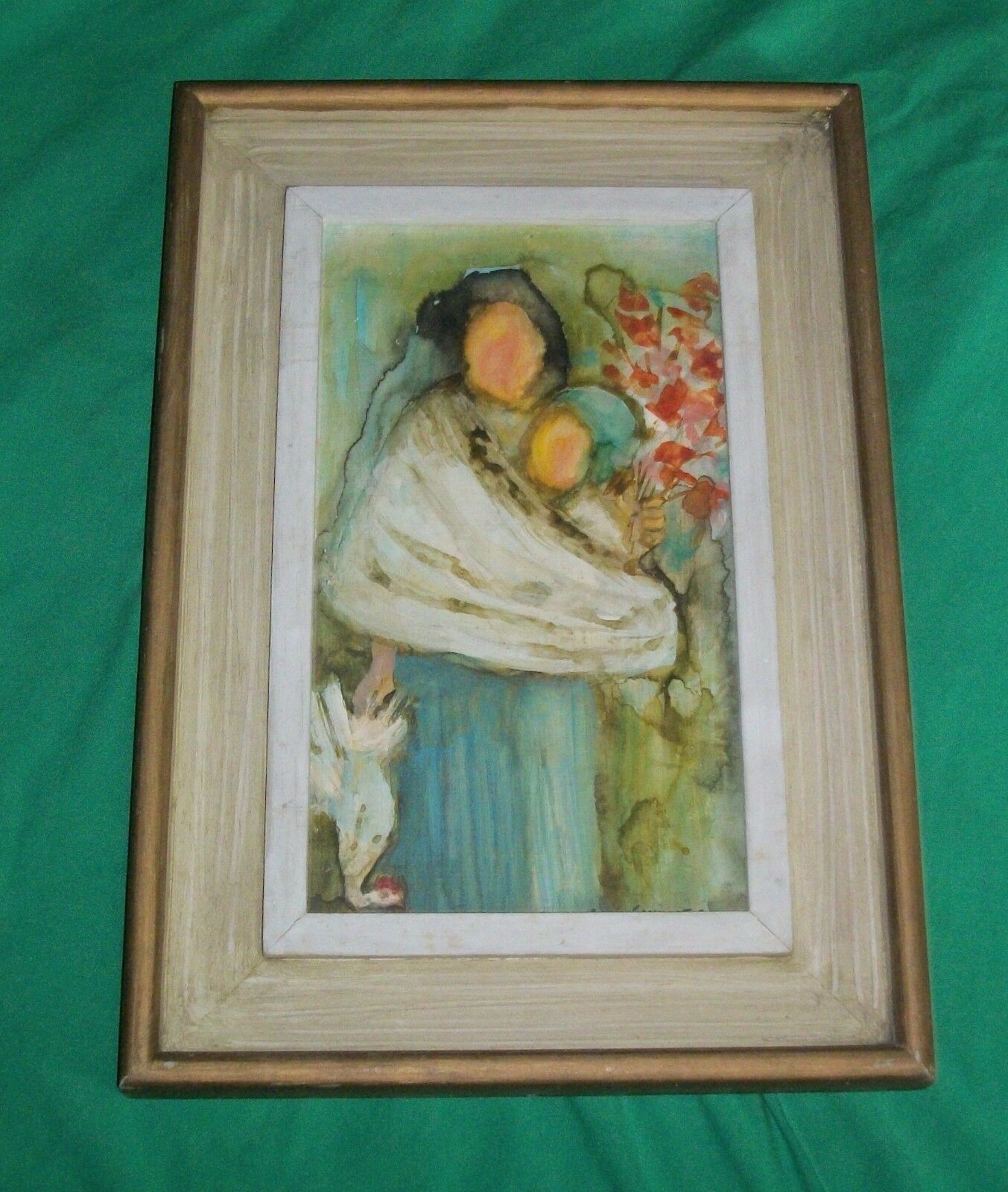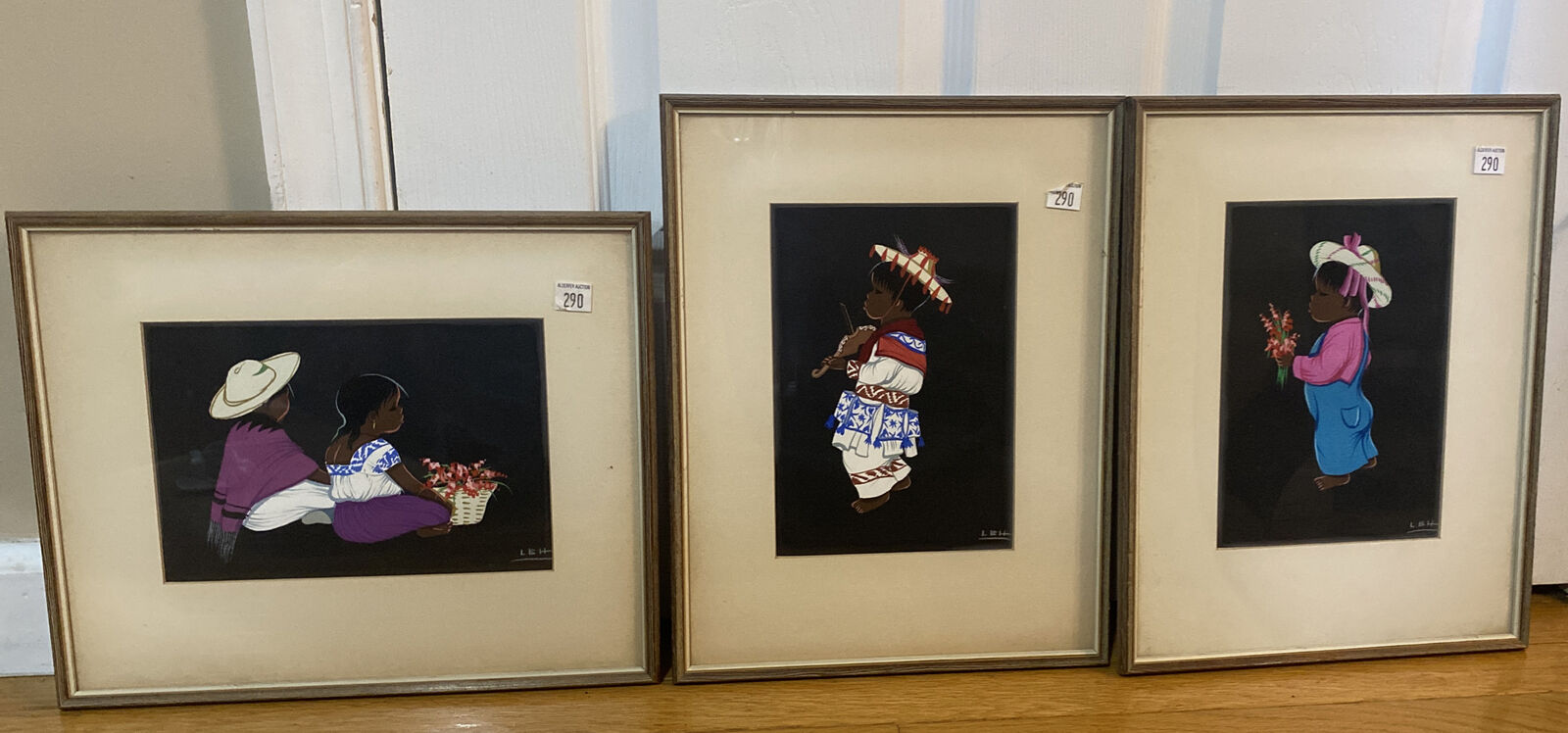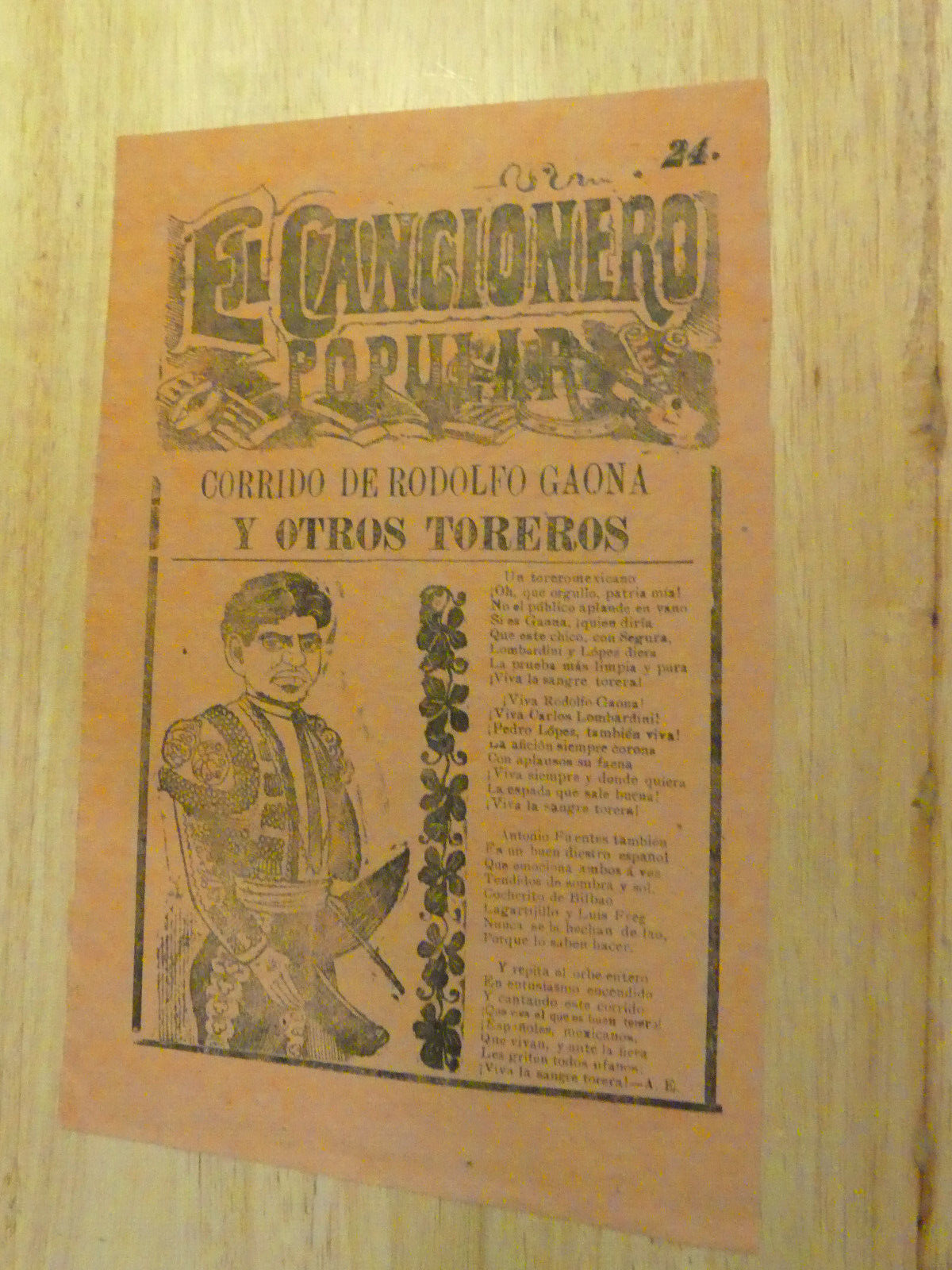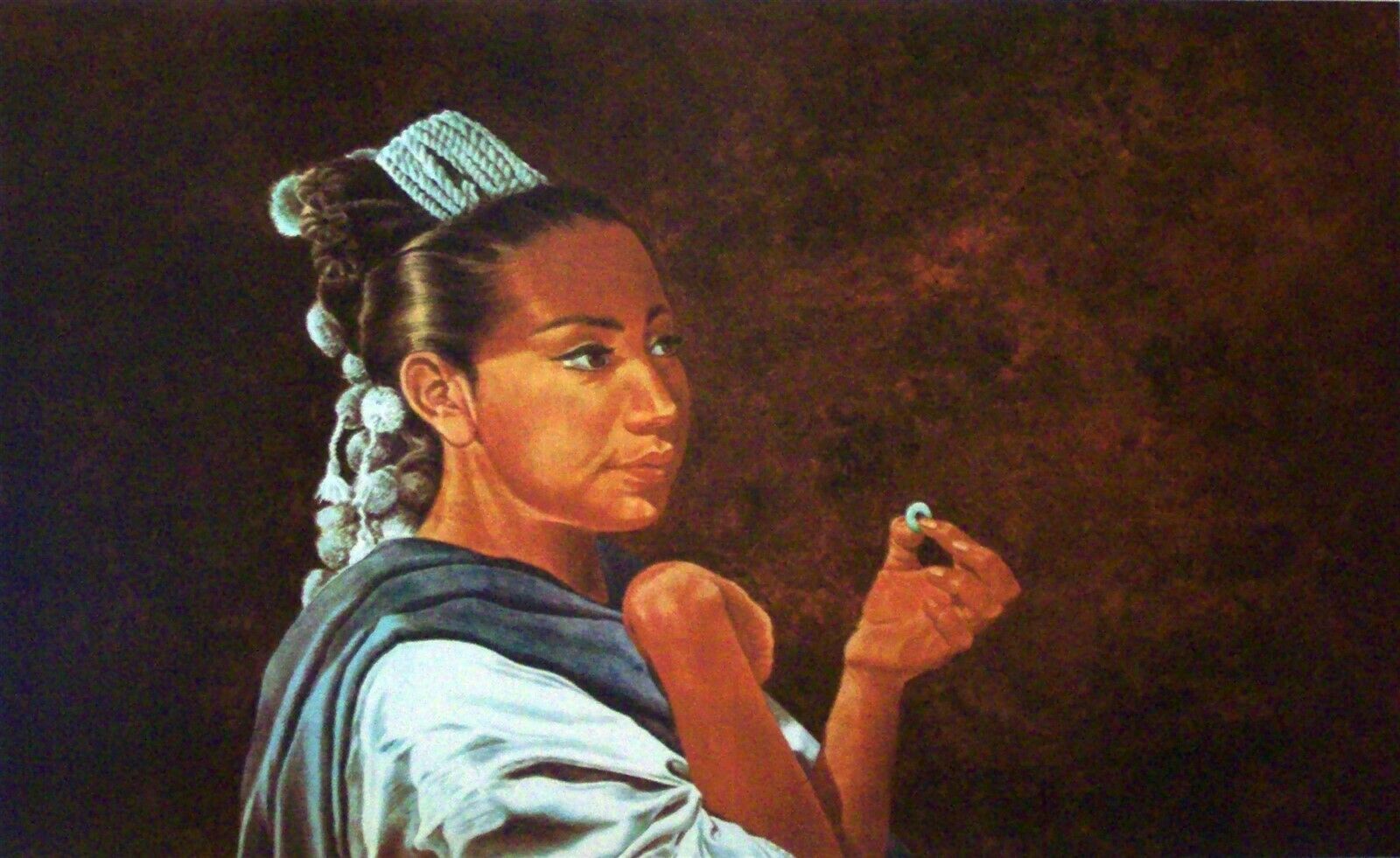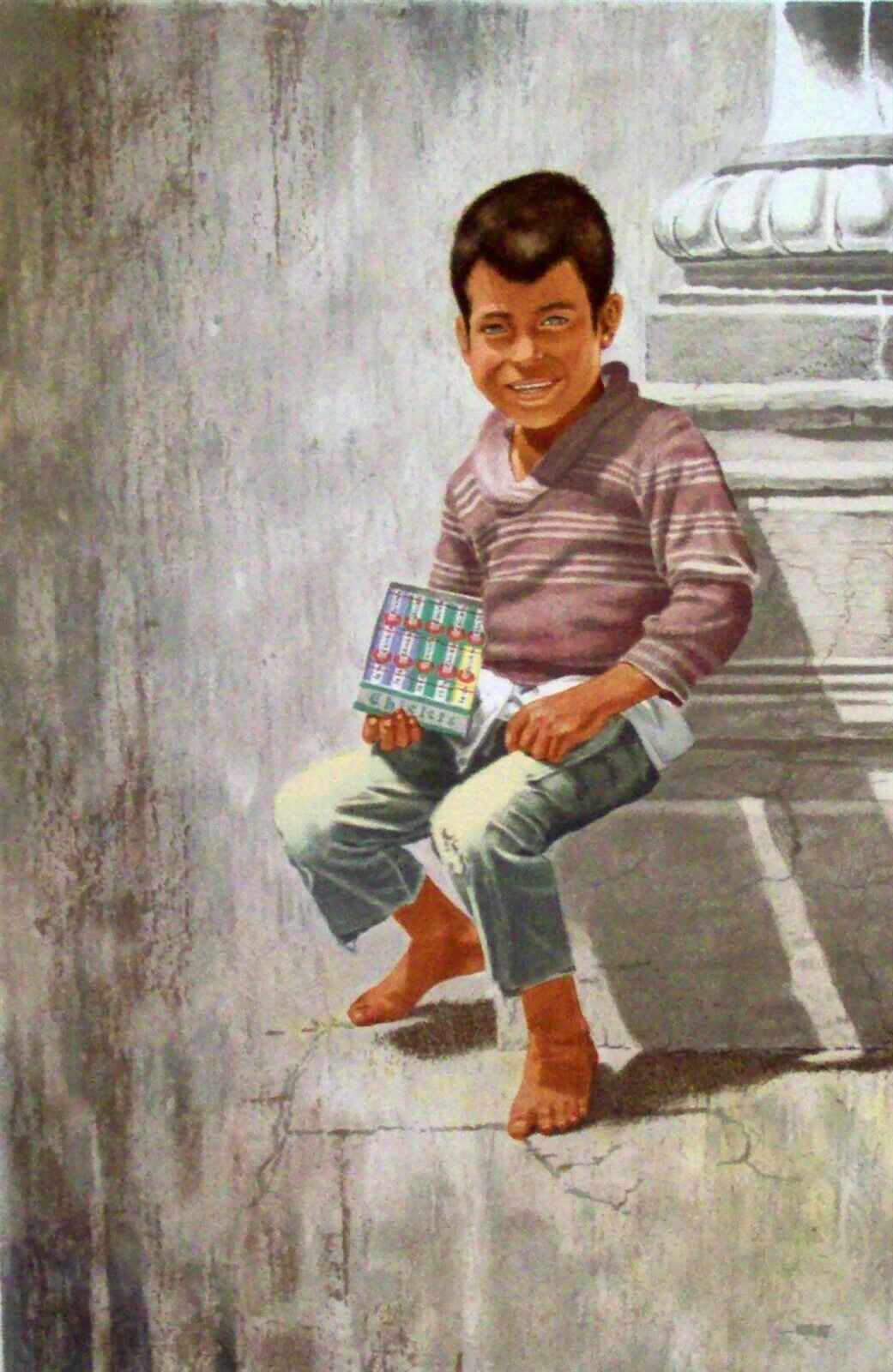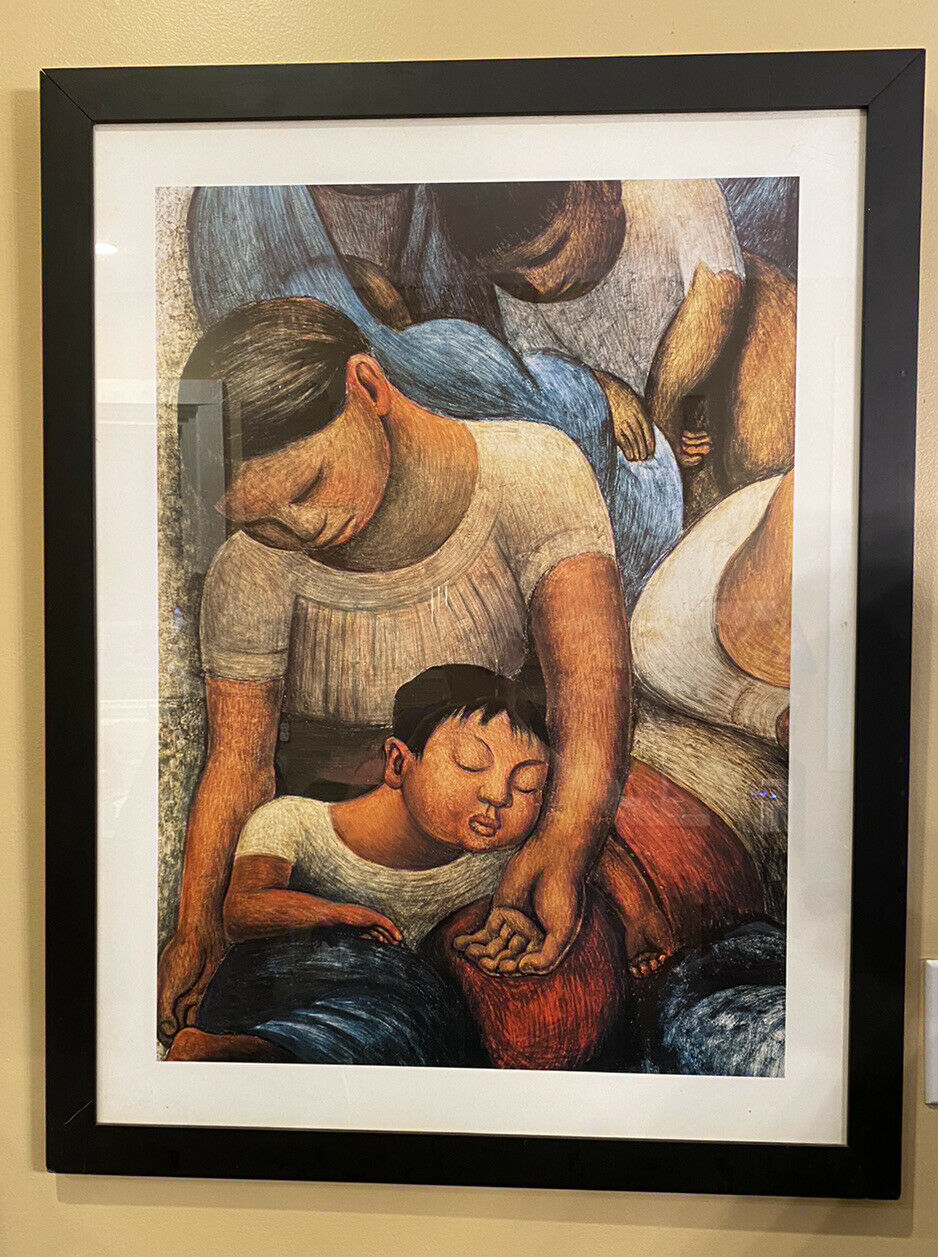-40%
VTG ACRYLIC PAINTING SONIA CERVANTES SAN MIGUEL de ALLENDE MEXICO MARKET MERCADO
$ 240.23
- Description
- Size Guide
Description
VTG ACRYLIC PAINTING SONIA CERVANTES SAN MIGUEL de ALLENDE MEXICO MARKET MERCADOGREETINGS, FEEL FREE
TO
"SHOP NAKED."
©
We deal in items we believe others will enjoy and want to purchase.
We are not experts.
We welcome any comments, questions, or concerns.
WE ARE TARGETING A GLOBAL MARKET PLACE.
Thanks in advance for your patronage.
Please Be sure to add WDG to your
favorites list
!
NOW FOR YOUR VIEWING PLEASURE…
"
HACIA EL MERCADO
"
or
"
TO THE MARKET
"
ORIGINAL ART / OA
BY LITTLE KNOW ARTIST
SONIA CERVANTES
Title card affixed to back:
Sonia Cervantes
Calle del Recreo, No, 84
San Miguel De Allende, OTO.
Mexico
ACRYLIC ON BOARD
MEASURES ABOUT 11" x 17"
IMPRESSIONISM / IMPRESSIONIST
IMAGE DEPICTS
A MOTHER w CHILD in a SLING
MADRE is HOLDING FLOWERS & A CHICKEN FOR DINNER, CON POLLO
PASTELS & EARTH TONES
LITTLE TO NO INFORMATION IS FOUND ON THE INET. ESTIMATED CIRCA 1945 +/-
----------------------------------------------
FYI
San Miguel de Allende is a city and municipality located in the far eastern part of the state of Guanajuato in central Mexico. It is part of the macroregion of Bajío. It is 274 km (170 mi) from Mexico City and 97 km (60 mi) from the state capital of Guanajuato. Historically, the town is important as being the birthplace of Ignacio Allende, whose surname was added to the town’s name in 1826, as well as the first municipality declared independent of Spanish rule by the nascent insurgent army during the Mexican War of Independence.
However, the town waned during and after the war, and at the beginning of the 20th century was in danger of becoming a ghost town. Its Baroque/Neoclassical colonial structures were "discovered" by foreign artists who moved in and began art and cultural institutes such as the Instituto Allende and the Escuela de Bellas Artes. This gave the town a reputation, attracting artists such as David Alfaro Siqueiros, who taught painting.
This attracted foreign art students, especially former U.S. soldiers studying on the G.I. Bill after the Second World War. Since then, the town has attracted a significant amount of foreign retirees, artists, writers and tourists, which is shifting the area’s economy from agriculture and industry to commerce catering to outside visitors and residents.
The main attraction of the town is its well-preserved historic center, filled with buildings from the 17th and 18th centuries. This and the nearby Sanctuary of Atotonilco have been declared World Heritage Sites in 2008.
The city has been known by various names since the Spanish founded the settlement. It was called Izcuinapan by the indigenous peoples. The Spanish originally called it San Miguel el Grande and sometimes San Miguel de los Chichimecas. San Miguel refers to the founder of the city, Father Juan de San Miguel. The name of the town was changed in 1826 to San Miguel de Allende in order to honor Ignacio Allende, who was born here. The surrounding municipality is officially called Allende, both seat and municipality are called San Miguel (de Allende). The municipality has a coat of arms that was designed by a group called Amigos de San Miguel, but it has not been officially recognized.
Before the arrival of the Spanish in the early 16th century, there had been an indigenous settlement at Izcuinapan (place of dogs). A small chapel was built and a village started near the indigenous village by Juan de San Miguel. He decided to dedicate the Spanish town to the Archangel Michael. However, the arrival and colonization provoked the locals. The Chichimecas began attacking Spanish travelers in the area and in 1551, the Guamare people attacked the village proper. This and continuous water supply problems caused the original location to be abandoned and moved.
The village was officially re-established in 1555 by Juan de San Miguel's successor, Bernardo Cossin and indigenous leader Fernando de Tapia. It was refounded both as a mission and as a military outpost. The new site was just northwest of the old one at a place with two fresh water springs (called Batan and Izcuinapan) and with terrain better suited for defense. The two springs supplied all of the town's water until the 1970s. Today, this second site is occupied by the Santa Escuela Church, which colloquially became known as the "old parish" by the 18th century.
In the late 1930s and early 1940s, the town began to attract artists and writers. One prominent artist and writer was Stirling Dickinson, an American, who came in 1938. In the 1940s, Dickinson established the Instituto Allende. Another art and cultural school established around the same time is the Escuela de Bellas Artes. Despite their rural location, both schools would find success after the Second World War. U.S. veterans studying under the G.I. Bill were permitted to study abroad, and these schools took advantage, attracting former soldiers as students. Enrollment at the schools rose and this began the town's cultural reputation. This attracted more artists and writers, including José Chávez Morado and David Alfaro Siqueiros, who taught painting at the Escuela de Bellas Artes. This, in turn, spurred the opening of hotels, shops and restaurants to cater to the new visitors and residents. Many of the American veterans who came to study in San Miguel would later come back to retire, and have been credited with saving the town.
The town's cultural, foreign and cosmopolitan nature has continued since that time. In the 1960s, Cantinflas promoted the area among his friends in the film industry. The city took on a Bohemian quality in the 1960s and 1970s as counterculture hippies moved in. The growing attraction of the town and its colonial buildings created a vibrant real estate market, which until recently has not been affected by Mexico’s economic ups and downs. Many of the old "ruins" of colonial houses have sold for more than a house in Mexico City. This is because many of San Miguel's buyers are foreign. Between 2006 and 2009, 34 projects constructed 405 housing units. The last peak of real estate sales came in 2007, with 180 units sold with a median price of 250,000 USD totaling 45 million.
The city and nearby sanctuary were declared a World Heritage Site when UNESCO met in Quebec, Canada in July 2008. It was chosen both for its well-preserved Baroque colonial architecture and layout as well as its role in the Mexican War of Independence. The area which has been inscribed includes 64 blocks of the historic center and the sanctuary of Atotonilco with the title of "Villa Protectora de San Miguel el Grande y el Santuario de Jesus Nazareno de Atotonilco."
Due to the world economic crisis the housing market dropped in 2010, with prices falling between 20 and 40 percent compared to two years earlier. The Asociacion de Profesionales Inmobelarios, a real estate group, blames news articles of Mexico's problems with drug related violence as the principal cause of keeping foreign buyers away. However, many Mexican buyers, mostly from large urban areas like Mexico City, Guadalajara, Queretaro, etc., have picked up the slack and are currently creating a new construction boom in the city.
The historic center
At the entrance of the city are statues of Ignacio Allende, Juan Aldama, Miguel Hidalgo and Josefa Ortiz de Dominguez, with one of the Archangel Michael in the center. While the outlying areas of the town and municipality have changed over time, the historic center remains much as it was 250 years ago. The layout of the center of the city is mostly a straight grid, which was favored by the Spanish during colonial times. However, due to the terrain, many roads are not straight. There are no parking meters, no traffic signals and no fast food restaurants. These roads are lined with colonial era homes and churches. With a few exceptions, the architecture is domestic rather than monumental, with well-tended courtyards and rich architectural details. The houses have solid walls against the sidewalks, painted in various colors, many with bougainvillea vines falling down the outside and the occasional iron-grated window. Many of the larger structures have large front doors which used to be used by horses and carriages.
In the historic center, there are an estimated two thousand doors, behind which there are at least two thousand courtyards of various sizes. Many of these have been restored to their former colonial state, with façades of ochre, orange and yellow, windows and doors framed by handcrafted ironwork and made of hewn wood. The interior roofs are flat, of heavy mortar supported by large beams. Very few structures have atriums or front yards; instead, open private space is behind the main façade in courtyards. These courtyards are where the private gardens were, protected from dust, excess water and crime.
The town is noted for its streetscapes with narrow cobblestone lanes, that rise and fall over the hilly terrain, and occasionally defy colonial attempts to make a straight grid. It is still a small city, and at night, many wander the narrow streets with relative safety. The people on the streets are a mix of Mexicans, foreigners and indigenous. Its cultural and artistic reputation has brought many people from Mexico and abroad here to live. Several publications have named it one of the top 10 places to retire. The town has attracted famous people such as Jose Guadalupe Mojica, Pedro Vargas and Cantinflas to have homes here. Additionally, indigenous peoples, mostly Otomis and Nahuas (Chichimecas) can be seen on the streets, as they come to sell and buy from rural communities as well as to attend church.
Since the 1920s, steps have been taken to preserve the historic center’s charm. The first set of protections was put into place by the INAH when it was declared a national monument. This required that all restorations and new construction conform to the area's colonial architecture. To preserve the city’s trademark colonial look, a civil society regulates the renovation and maintenance of the city, especially its historic center. This includes aspects such as traffic, garden spaces and even the kinds of social events that may be held. The town has also put much effort into preserving the cobblestone streets. The most recent designation is that of a World Heritage site, along with the religious sanctuary in nearby Atotonilco, which also puts restrictions and protections into place.
About half of the colonial buildings have been partially or fully converted into businesses such as stores, restaurants, galleries, workshops and hotels. Since there is no zoning, residential and commercial establishments are well-mixed. Although it is small and rural, it has a wide variety of upscale and ethnic restaurants, specialty shops and art galleries. All around the historic center there are over 80 bars and cantinas as well as various nightclubs. To compete, many offer two-for-one drink specials. Others rely on gimmicks such as the frontier themed bar on Mesones Street called “El Gato” with swinging cantina doors like those seen on “Old West” movies.
In September 2010, the first contemporary architectural structure arrived in the historic colonial center with the opening of Hotel Matilda. The hotel's four buildings have a modern design, with public areas decorated with the art works of contemporary Latin artists, many of them very large pieces. Only the exterior street wall, along Calle Aldama, reflects the colonial style.
Due to its growth as a tourist destination, some of the most obvious culture seen on the streets of the town relates to visitors, both foreign and Mexican. To cater to these visitors, the town contains organic cafes, boutiques, art galleries, upscale restaurants and hotels, and a wide variety of bars and nightclubs. Bars and nightclubs range from DJs or loud bands catering to young people, to jazz clubs, sports bars and even those that specialize in traditional Mexican music such as mariachi. Some were founded by foreigners and reflect that ownership, for example the Berlin Bar & Bistro. Shops around the Jardin Principal sell art, handcrafts, furniture and decorative items. The Fabrica La Aurora is an old textile mill that has been converted into galleries and shops selling art, furnishings and antiques; it has a lot of open space along with a café and restaurant. San Miguel has several schools for learning Spanish, most catering to foreign visitors. These include the Instituto Allende (with credits transferable to U.S. or Canadian colleges), Language Point and Warren Hardy Spanish. Some universities such as the University of Texas-Pan American offer study abroad programs in the city, not only in Spanish but also in arts and literature, and creative writing.
(THIS PICTURE FOR DISPLAY ONLY
)
---------------------------
Thanks for choosing this auction. You may email for alternate payment arrangements. We combine shipping. Please pay promptly after the auction. The item will be shipped upon receipt of funds. WE ARE GOING GREEN, SO WE DO SOMETIMES USE CLEAN RECYCLED MATERIALS TO SHIP.
Please leave feedback when you have received the item and are satisfied. Please respond when you have received the item * If you were pleased with this transaction, please respond with all 5 stars! If you are not pleased, let us know via e-mail. Our goal is for 5-star service. We want you to be a satisfied, return customer.
Please express any concerns or questions. More pictures are available upon request. The winning bid will incur the cost of S/H INSURED FEDEX OR USPS. See rate calculator or email FOR ESTIMATE. International Bidders are Welcome but be mindful if your country is excluded from safe shipping.
Thanks for perusing
THIS
and
ALL
our auctions.
Please Check out our
other items
!
WE like the curious and odd.
BUY, BYE!!
Pictures sell!
Auctiva Free Image Hosting.
Show off your items with
Auctiva's Listing Templates
Auctiva,
THE simple solution for eBay sellers.
Track Page Views With
Auctiva's FREE Counter
